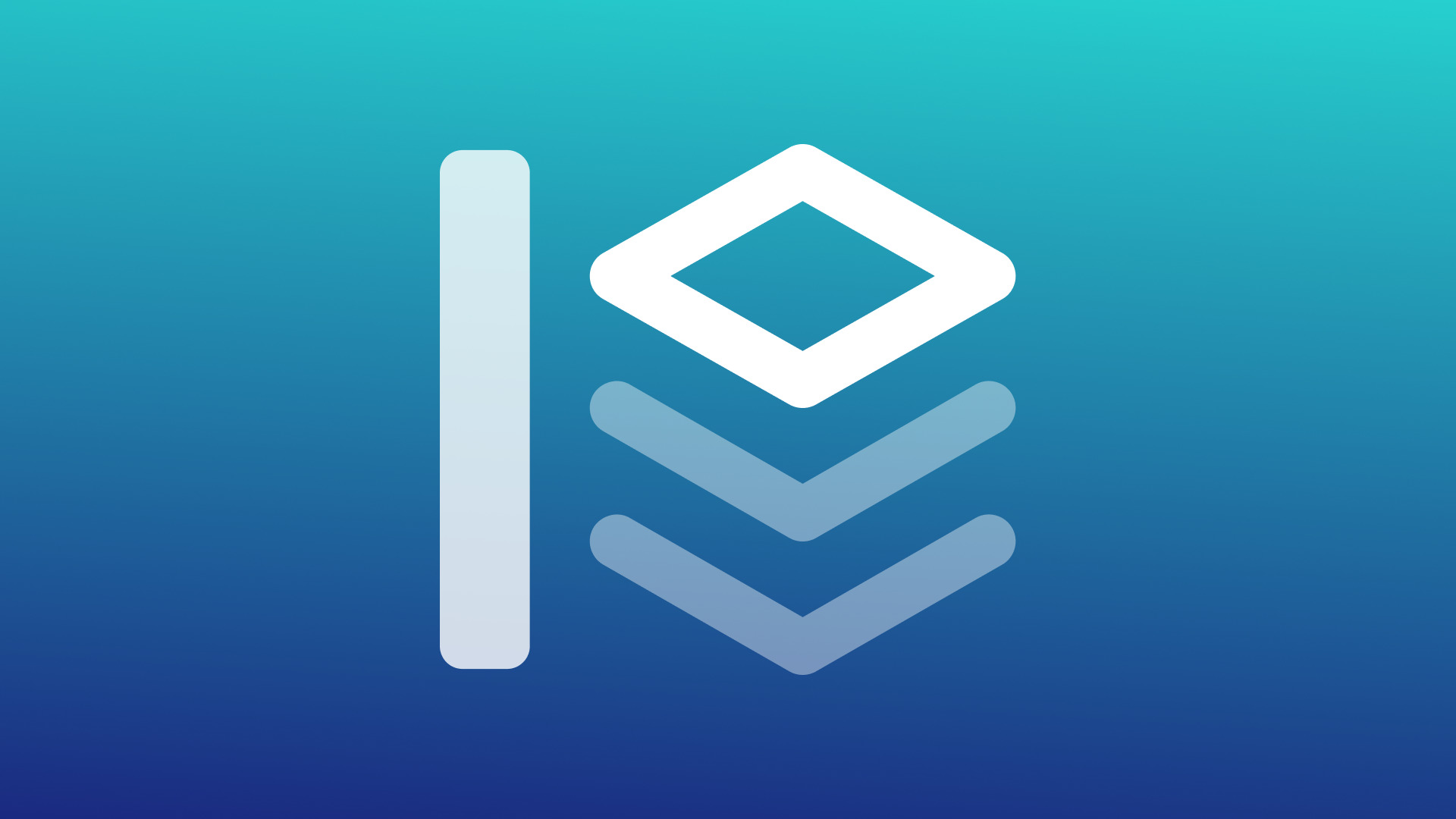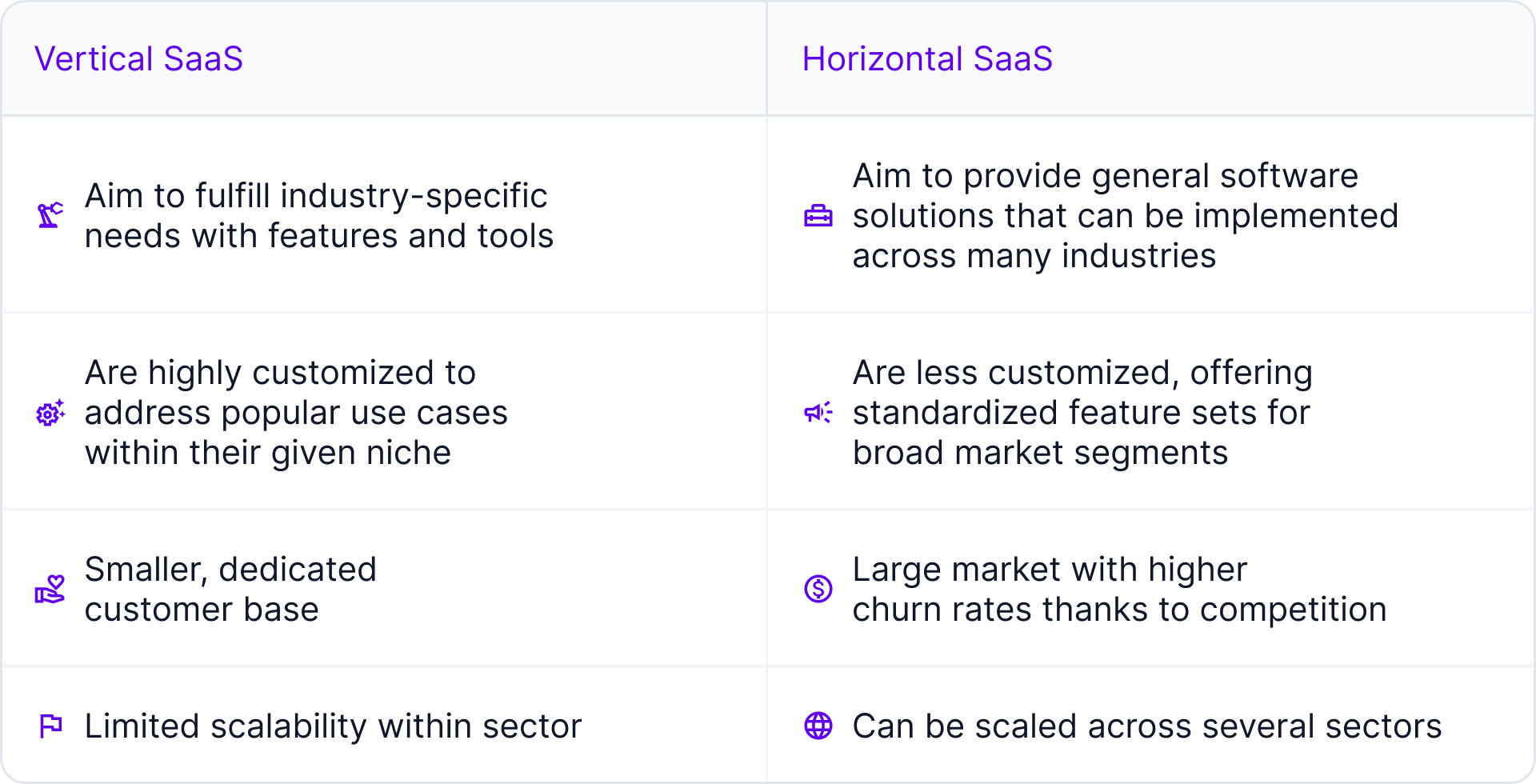Vertical SaaS: definition, benefits and examples

Take a self-guided tour of the platform.
See why Vertice is trusted by top procurement leaders.
New trends are constantly emerging to reshape the SaaS landscape. As digital transformation efforts push the industry to a staggering market value of $197 billion, burgeoning technologies such as AI, headless architecture and low-code solutions are disrupting the space and seeing rapid integration across many SaaS products.However, one key type of SaaS that has gained momentum in recent years is not actually powered by any new piece of technology, but rather a unique means of distribution that has become increasingly accessible. Enter Vertical SaaS.With the ability to boost organizational efficiency and reduce the impact of SaaS overspending, it comes as little surprise that Vertical SaaS solutions are starting to gain momentum. After all, with the cost of software rising by 12% each year and 90% of companies overpaying for these tools by an average of 26% – often far more – many are under increasing pressure to find opportunities to cut back.For certain companies, Vertical SaaS provides this opportunity.But what else is there to know about this type of software? What other benefits are there besides cost savings? And which vertical software solutions are currently dominating the market?Here's everything you need to know.,
What is Vertical SaaS?
Vertical SaaS refers to cloud-based software applications that are developed to meet the unique requirements of one specific industry.While these tools often begin their lifecycle as custom-built in-house solutions, developed to address a specific business need, over time they may be scaled and distributed to wider audiences within the same niche. For this reason, they are also known as ‘industry-specific’ SaaS solutions, designed for use as all-in-one tools catering for select vertical markets.Vertical SaaS is most commonly used in sectors that require complicated, highly configured systems to operate — for example in healthcare, real estate, and manufacturing. This level of specialization enables businesses to leverage software that is perfectly aligned with their workflows and requirements.
Horizontal vs Vertical SaaS
As opposed to Vertical SaaS, Horizontal SaaS provides solutions that can be used across many different industries. These general-purpose tools are the ‘standard’ solutions that make up most of an organization’s SaaS portfolio, and have been around (or rather, popularly used) for a longer time than most Vertical software solutions.Horizontal SaaS provides software solutions for general business functions that crop up across many different industries. For example, general comms, file-sharing, or project management tools could be considered Horizontal SaaS.Below, we’ve outlined some of the key differences between these two models of distribution.,

,
What are the benefits of using a Vertical SaaS solution?
So, now that we understand what Vertical SaaS entails, let’s take a closer look at what it could offer to your business.
Cost-saving opportunities
Vertical SaaS often comes with a higher upfront price tag than Horizontal alternatives, thanks to its more specialized nature and niche product offering. In spite of this, prioritizing Vertical SaaS solutions can provide long-term cost-saving benefits. This is because when purchasing all-in-one Vertical software, there is a reduced need to purchase or renew other Horizontal solutions to fill in gaps in functionality.Unlike horizontal SaaS, which might require extensive customization to align with your industry's needs, Vertical SaaS solutions are purpose-built for your sector. This targeted approach eliminates the need for costly software adjustments, reducing expenses associated with implementation. Plus, when tools are purpose-built for common use cases, users typically require less training.As a result, your company can achieve quicker time-to-value and a more predictable budget.
Tailored integrations
Integration challenges can be a major roadblock when adopting new software. However, Vertical SaaS solutions often come with pre-built integrations designed specifically for your industry's ecosystem. These well-oiled solutions provide developers with full control to build native integrations into the product, so businesses can integrate other tools in their niche’s wheelhouse that often wouldn’t make the cut for Horizontal SaaS integrations.As a result, Vertical software solutions often seamlessly connect with your existing tools, databases, and platforms, reducing the complexities associated with integrating disparate systems. Users that leverage Vertical integrations can enjoy the benefits of smoother workflows and improved collaboration across departments.
Industry specific features
The primary attribute giving Vertical software a competitive advantage is its industry-specific functionality. These solutions are finely tuned to cater to the exact needs and challenges of their targeted sector, helping businesses to streamline workflows and address goals that would be time-consuming, challenging, or entirely impossible to complete with alternative tools.This tailored approach empowers teams to work more efficiently, as they no longer need to navigate irrelevant functionalities common in Horizontal solutions.
Increased ROI
Now more than ever, financial officers are prioritizing investments that can be mapped to positive, tangible business outcomes. As SaaS prices continue to soar, SaaS purchases or renewals must be proven to yield a positive return on investment. This is where Vertical SaaS excels, delivering a higher prospective ROI in comparison to Horizontal counterparts.This is because of the improved operational efficiency associated with Vertical tools — capable of effectively reducing downtime on manual processes and enhancing customer experiences. Together, these factors drive increased productivity and opportunity for revenue growth, making Vertical SaaS a strategic choice for maximizing the value of software investments.
Regulatory compliance
Organizations are subject to various regulations and compliance standards that vary with their industry. Vertical software ensures that these standards are embedded into the software itself, rather than requiring businesses to implement more general Horizontal solutions to handle sensitive data.Vertical solutions traditionally result in reduced compliance risk, as the software automatically enforces industry-specific rules and best practices across verticals like healthcare (HIPAA) and finance (PCI-DSS).With regulatory compliance built into your software, you can focus on your core operations without the constant worry of inadvertently breaching any guidelines. With more robust security features, sensitive data and peace of mind alike are protected.
Higher user productivity
As all-in-one solutions, Vertical SaaS products encompass a wide range of functions necessary for your industry. This eliminates the need to juggle multiple software tools, reducing complexity and compatibility issues when sharing and accessing data. What’s more, the use of one central application means that users can prevent context switching between many different tools, reducing downtime lost through learning and navigating between different interfaces.Instead, users can access their data out of one intuitive workflow. This also helps to simplify data analytics and reporting, supporting end users to make informed decisions. Whether it's managing financial processes, overseeing supply chain operations, or optimizing customer interactions, Vertical SaaS can serve as an all-in-one solution to reduce operational friction., , , ,
Examples of Vertical SaaS companies
A wide range of Vertical software companies create highly specialized, intelligent tools for their industry — and the list continues to grow. Here are some of the top-cited tools helping specific verticals to operate.
nCino
nCino offers a cloud-based platform for financial institutions to manage loan origination, account opening, and customer relationship management. This optimizes the efficiency of financial workflows and supports customer experience in the banking sector, while reducing the need for dedicated Horizontal software services such as CRMs.
Toast
Toast is a leading Vertical software platform which provides an operating system for hospitality businesses to streamline operations. The Toast business suite encompasses point-of-sale systems, online ordering, inventory management and more out of one user-friendly interface. It supports cafés, bars, and restaurants to gain a digital-first competitive edge.
Duck Creek Technologies
Duck Creek is a leading provider within the insurance industry, supporting businesses with bespoke tools for policy administration, claims management, and billing. Its tailor-made solutions enhance operational efficiency and customer service for insurance professionals.Other notable Vertical SaaS examples include:
,
What does Vertical SaaS mean for your SaaS stack?
As the demand for specialized solutions continues to grow, Vertical SaaS tools could become a lifeline for your business.Unlike Horizontal tools that offer more broad functionalities, Vertical SaaS solutions align precisely with your industry's needs. These solutions promise countless possibilities for companies to enhance their efficiency and drive growth.In time, demand will continue to rise for these tools and further advancements will be made to integrate new technologies that boost their capabilities. For example, AI functionality looks set to disrupt the industry, as natural language processors are made more accessible and offer new and specific use cases within health record analysis.Vertical tools may also come to replace many businesses’ in-house tools, as organizations shift towards cloud-powered solutions.All in, Vertical software could quickly become a larger part of your SaaS stack. But with higher upfront investments traditionally expected for their implementation, you’ll need a bulletproof SaaS procurement strategy to ensure you’re taking maximum value from each contract you subscribe to., "Vertical software could quickly become a larger part of your SaaS stack, but with higher upfront investments, you'll need a bulletproof SaaS procurement strategy to ensure you're taking maximum value from each contract you subscribe to.",
Manage your Vertical software subscriptions with Vertice
To set your organization up for success with Vertical SaaS, you’ll need an effective software procurement process. With an average discount across Vertical SaaS of just 14%, you’ll need as much leverage as possible to attain favorable pricing. And that’s where we come in. Our SaaS buyers are experienced in negotiating discounted and flexible terms for less, by leveraging extensive pricing benchmark data and years of expertise to negotiate on your behalf.But successful procurement is only half of the battle.Once you’re onboarded with the tailored Vertical software you need to succeed, you’ll have to effectively manage the contracts. Our data shows that even with the higher ROI offered by Vertical platforms, organizations still see an average of 30% underutilization across their solutions, with Vertical tools going underused or all-out abandoned by the target users.Our SaaS management platform provides a convenient dashboard to assess usage, monitor renewals, and identify cost-saving opportunities. Chances are, you’ll have more than just vertical SaaS in your portfolio — and we can help you to manage your full breadth of tools for maximum savings.See for yourself how much you could be saving on your annual SaaS spend, or alternatively browse our extensive vendor database for Vertical software pricing insights today.,

, , , , , , , , , , , , , , , , , , , , , , , , , , , , , , , , , , , ,
.webp)


![The Best SaaS Management Platforms for 2026 [According to Analyst Research]](https://cdn.prod.website-files.com/6640cd28f51f13175e577c05/687f56f6e55f8c0078341eb6_2025-06-Lionfish-Tech-Advisors-Report-01-1080x1080.webp)


.webp)